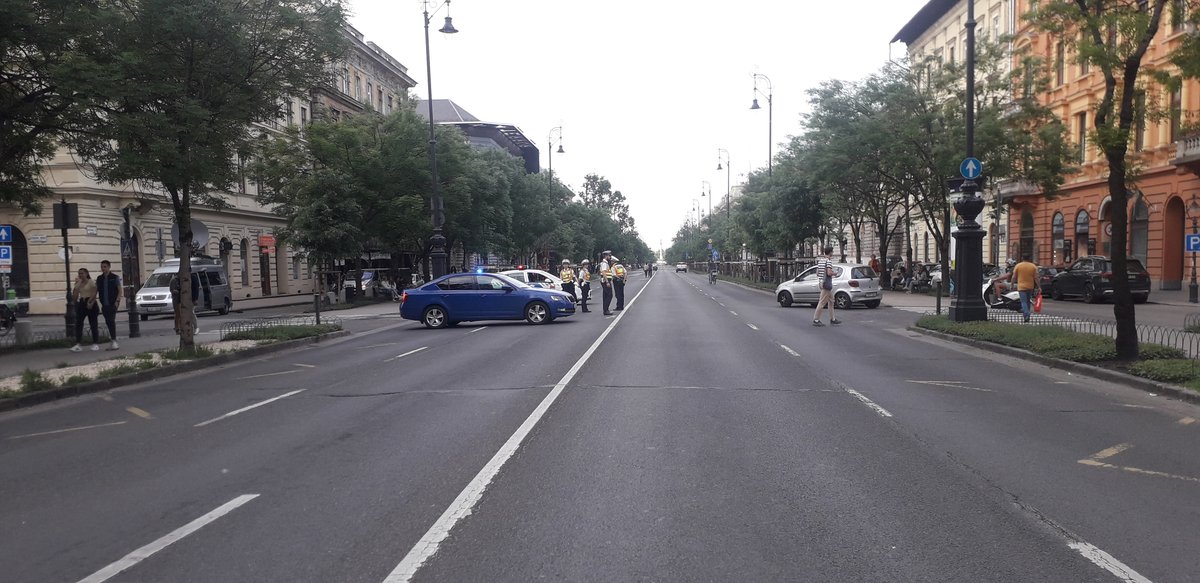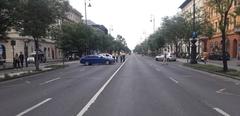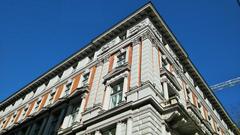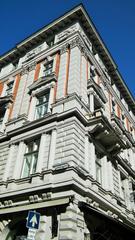
Andrássy Út Budapest: Complete Visiting Hours, Tickets, and Historical Sites Guide
Date: 14/06/2025
Introduction
Andrássy Út, or Andrássy Avenue, is one of Budapest’s most illustrious boulevards and a UNESCO World Heritage Site, celebrated for its architectural splendor, vibrant cultural life, and historical importance. Conceived in the late 19th century and inspired by Paris’s Champs-Élysées, the avenue connects the city center to the tranquil City Park (Városliget), while showcasing Hungary’s national ambitions and architectural achievements. Lined with Neo-Renaissance mansions, art nouveau villas, luxury boutiques, and world-class cultural institutions, Andrássy Út is a living testament to Budapest’s dynamic evolution. Whether your interests lie in history, architecture, shopping, or gastronomy, this guide will help you make the most of your visit, with detailed information on visiting hours, tickets, must-see landmarks, and practical travel tips (budapest.com, travelguidebudapest.com, visithungary.com).
Table of Contents
- Origins and Urban Vision
- Construction Timeline and Urban Planning
- Architectural and Engineering Achievements
- Iconic Landmarks and Cultural Institutions
- Must-See Attractions Along Andrássy Út (with Visiting Hours and Ticket Info)
- Shopping and Dining Guide
- Entertainment and Cultural Experiences
- Practical Visitor Information
- Nearby Attractions
- Fascinating Facts and Historical Milestones
- FAQ: Common Visitor Questions
- Enhance Your Visit with Interactive Media and Maps
- Explore More and Stay Connected
- References
Origins and Urban Vision
Andrássy Út emerged during Budapest’s rapid urban transformation in the late 19th century. Designed to relieve congestion from Király Street and provide a prestigious ceremonial route from the city center to City Park, the avenue was named after Count Gyula Andrássy, Hungary’s Prime Minister and a major proponent of the project. The vision was to rival Europe’s grandest boulevards and symbolize Hungary’s modern identity (budapest.com, welovebudapest.com).
Construction Timeline and Urban Planning
Construction began in 1872 and was largely completed by 1876, stretching 2.5 kilometers from Erzsébet Square to Heroes’ Square. The avenue was developed in three distinctive sections:
- Erzsébet Square to Oktogon: Characterized by grand townhouses and commercial buildings.
- Oktogon to Kodály körönd: Lined with smaller palaces and elegant villas.
- Kodály körönd to Heroes’ Square: Features stately mansions set back with gardens, culminating in the monumental Heroes’ Square (cestee.com).
Architectural and Engineering Achievements
Neo-Renaissance and Eclectic Styles
The avenue is a showcase of Neo-Renaissance architecture with Art Nouveau and Eclectic influences. Renowned architects like Miklós Ybl (designer of the Hungarian State Opera House) crafted harmonious façades, ornate stonework, and distinctive towers at key intersections (budapest.com, welovebudapest.com).
Millennium Underground Railway (M1)
Beneath Andrássy Út runs the Millennium Underground (M1), the oldest metro line in continental Europe. Completed in 1896 and now a UNESCO World Heritage Site, it features shallow, ornately tiled stations that remain operational today, offering both convenience and a step back into Budapest’s Belle Époque (hungaryunlocked.com, budapest.com).
Urban Infrastructure and Streetscape
Andrássy Út boasts wide carriageways, tree-lined promenades, public squares, and statues. Its innovative underground utilities and pedestrian-friendly design were groundbreaking for their time, and remain exemplary in urban planning (funzine.hu, budapest.city).
Iconic Landmarks and Cultural Institutions
- Hungarian State Opera House: A Neo-Renaissance architectural gem, offering daily guided tours and world-class performances (opera.hu).
- House of Terror Museum: Documents the tragedies of Hungary’s 20th-century dictatorships.
- Liszt Ferenc Square: Bustling with cafes and the statue of composer Franz Liszt.
- Kodály körönd: Four ornate mansions surround this circular square, home to the Zoltán Kodály Memorial Museum and Archives.
- Ferenc Hopp Museum of East Asian Arts: Housed in a villa with tranquil gardens, displaying Hungary’s largest East Asian collection.
- Heroes’ Square: The monumental terminus of Andrássy Út, flanked by the Museum of Fine Arts and Kunsthalle.
Must-See Attractions (with Visiting Hours and Ticket Info)
Hungarian State Opera House
- Visiting Hours: Daily guided tours typically from 10:00 AM to 3:30 PM.
- Tickets: Tours ~3500 HUF; performance tickets vary. Purchase online or at the venue (opera.hu).
House of Terror Museum
- Opening Hours: Tuesday–Sunday, 10:00 AM–6:00 PM; closed Mondays.
- Tickets: ~3000 HUF adults; discounts available. Audio guides offered (terrorhaza.hu).
Liszt Ferenc Square
- Access: Open all year; cafes and restaurants have varying hours.
Kodály körönd & Zoltán Kodály Memorial Museum
- Museum Hours: Tuesday–Saturday, 10:00 AM–5:00 PM.
- Tickets: ~1500 HUF.
Ferenc Hopp Museum of East Asian Arts
- Opening Hours: Tuesday–Sunday, 10:00 AM–6:00 PM.
- Tickets: ~2000 HUF; concessions available.
Heroes’ Square (Hősök tere)
- Access: Open 24/7, free entry. Museums nearby have separate hours and tickets.
Millennium Underground Railway (M1)
- Operating Hours: ~4:30 AM–11:30 PM daily.
- Tickets: Single metro tickets (350 HUF) or travel cards.
Nagymező Street (“Broadway of Budapest”)
- Show Times: Vary by venue; check individual theater schedules.
Shopping and Dining Guide
Luxury and Designer Boutiques
Between Deák Ferenc Square and Oktogon, you’ll find flagship stores for Gucci, Louis Vuitton, Burberry, and Prada, as well as local Hungarian designers like Nanushka and Herend Porcelain (verdihotels.com, justbudapest.com).
Tips:
- Non-EU visitors can claim VAT refunds for qualifying purchases.
- HUF is preferred; credit cards widely accepted (triptobudapest.hu).
Dining Along Andrássy Út
- Kollázs Brasserie & Bar: French-inspired Hungarian cuisine with Danube views.
- Iconic Cafés: Try Gerbeaud Café (nearby) for Hungarian pastries like dobos torta and Esterházy torte.
- Dining Tips: Reserve ahead on weekends. Tipping (10–15%) is customary unless included.
Entertainment and Cultural Experiences
- Opera, Theatres, and Art Galleries: Attend performances at the Opera House, visit the Budapest Operetta Theatre, and explore galleries like the Ernst Museum and Mai Manó House.
- Seasonal Events: The avenue hosts festivals, parades, and Christmas markets, transforming into a pedestrian zone with music and local crafts (justbudapest.com).
Practical Visitor Information
- Getting There: The M1 Millennium Underground (yellow line) runs beneath the avenue; trams 4 and 6 connect at Oktogon.
- Walking: The 2.5 km stretch is ideal for strolling; allocate 3–4 hours to explore.
- Safety: Take standard urban precautions; watch for pickpockets in crowded spots.
- Language: English is widely spoken; a few Hungarian phrases are appreciated.
- Water: Tap water is safe; bottled water is color-coded.
- Accessibility: The avenue and most attractions are wheelchair-friendly; verify access at specific venues.
Nearby Attractions
- St. Stephen’s Basilica: A short walk from Erzsébet tér, with panoramic city views.
- City Park (Városliget): Home to Széchenyi Thermal Baths, Vajdahunyad Castle, and Budapest Zoo.
- Hungarian Parliament: Within walking distance, iconic for its neo-Gothic architecture.
Fascinating Facts and Historical Milestones
- Andrássy Út, the Millennium Underground, and Heroes’ Square have UNESCO World Heritage status since 2002 (Wikipedia).
- The M1 is Europe’s oldest electric underground railway (opened 1896).
- The avenue’s name has changed several times due to historical events, reverting to Andrássy Út in 1990.
- Many mansions were financed by 19th-century banking dynasties and designed by Hungary’s top architects.
FAQ: Common Visitor Questions
Q: What hours are attractions open?
A: The avenue is open 24/7; museums and theaters usually operate 10 AM–6 PM, but check official sites for details.
Q: Do I need tickets to walk on Andrássy Út?
A: No, the boulevard is public and free. Tickets are required for attractions like museums and theaters.
Q: Is the Millennium Underground Railway still operational?
A: Yes, it runs daily with modern trains and historic stations.
Q: Is Andrássy Út accessible for wheelchairs?
A: The avenue and most major sites are accessible, though some older metro stations may have limitations.
Q: When is the best time to visit?
A: Spring and autumn offer pleasant weather and lively events.
Q: How do I buy tickets for the Opera House?
A: Purchase online (opera.hu) or at the box office.
Enhance Your Visit with Interactive Media and Maps
- Map: Interactive map of Andrássy Út with landmarks and metro stations.
- Virtual Tours: Explore the Opera House and Heroes’ Square online.
- Photos: High-quality images with SEO-optimized alt tags such as “Andrássy Avenue Budapest,” “Budapest historical sites,” and “Andrássy Avenue visiting hours.”
Explore More and Stay Connected
Discover more about Budapest’s treasures through our related guides:
For up-to-date travel tips, event news, and exclusive offers, follow us on social media and download the Audiala app for audio tours and planning tools.
References
- Andrássy Avenue Budapest: Visiting Hours, Tickets, and Historical Guide (budapest.com)
- Exploring Andrássy út: Visiting Hours, Tickets, and Budapest’s Iconic Historical Boulevard (travelguidebudapest.com)
- Exploring Andrássy Út: Visiting Hours, Tickets, and Must-See Budapest Historical Sites (visithungary.com)
- Andrássy Út Budapest: Visiting Hours, Tickets, and Guide to Shopping, Dining & Culture (justbudapest.com)
- verdihotels.com
- triptobudapest.hu
- funzine.hu
- opera.hu
- terrorhaza.hu










































































































































































